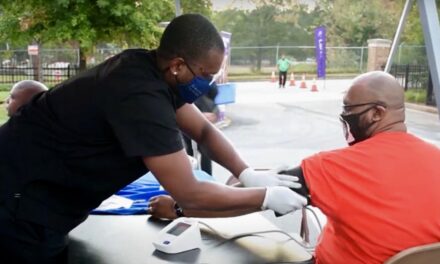In Massachusetts, there have long been calls for reparations. Thirty-six years ago, Bill Owens, the state’s first Black state senator, sponsored a bill to provide restitution for descendants of enslaved African Americans based on the economic benefit of the slave trade to the Commonwealth.
While Owens didn’t live to see it, Massachusetts and a number of its towns and cities are beginning to reckon with their role in slavery and consider whether to pay some form of reparations. Amherst established a $2 million “reparations bank” funded by the town’s cannabis tax. Boston, Cambridge, and Northampton set up commissions to acknowledge past harms and study reparations. The Boston Taskforce on Reparations, appointed by Mayor Michelle Wu, has contracted with scholars to document the city’s historical actions and how they have contributed to racial disparities. There is also an effort at the state level, where Senator Liz Miranda has introduced legislation to convene a statewide task force to study reparations.
However, reparations at the state, local, and national levels have been hindered by the lack of well-documented models for how the government compensates other types of harms. Our new research, published in the Russell Sage Foundation Journal of the Social Sciences on Juneteenth, remedies this gap. In addition to US involvement in securing reparations for Holocaust survivors and Japanese Americans incarcerated without trials during World War II, the federal government also pays what we term “reparatory compensation” to hundreds of categories of victims of mostly nonracial harms.
These include personal injury, illness, disease, economic losses, exposure to toxins, disasters, and other afflictions. There are federal restitution programs for coal miners who suffer lung diseases; farmers with crop failures; fishermen facing depleted fish stocks; workers whose companies have gone bankrupt; victims of terrorism, wrongful conviction, or natural disasters; individuals exposed to nuclear radiation; military veterans; descendants of Native American tribes denied income on their lands; people harmed by pesticides, toxins, vaccines, or medical devices; workers who lose jobs due to US trade agreements, and many others.
Our work reveals five federal lessons relevant for state and local efforts. First, the government often decides that the country as a whole will be better off if it compensates for certain losses or hardships that individuals have suffered through no fault of their own. The laws enabling these reparatory compensation programs cite this norm as justification for the funding.
Second, it is important to allow victims to tell their stories. For example, starting in the 1940s, hundreds of thousands of people living in Nevada and other Western states were exposed to radioactive contamination from the US nuclear testing program. Many developed health problems from drinking, eating, and breathing high amounts of radioactivity.
Half a century later, Congress held local hearings, enabling residents to tell stories of harms to their deceased relatives. The hearings validated the suffering and made federal legislation possible, which has paid out $33 billion to some 200,000 survivors and heirs. Having heard the stories of Americans harmed by nuclear weapons testing in the 1940s, America needs to hear the stories of Black Americans harmed by conventional weapons during the 1921 Tulsa Race Massacre.
Third, there is precedent for compensating descendants of those who were wronged. For example, since 2009, the United States pays partial restitution to half a million sixth- and seventh-generation descendants of Native American tribes whose land rights (such as revenues from grazing, mining, and timber) were stolen or squandered by the Department of the Interior in the 19th century. The amount falls far short of the total debt, but the precedent is relevant for assessing racial harms to Black descendants of land theft, victims of racial violence, and Black veterans denied housing.
Fourth, the government uses a variety of methods to finance compensation, including excise taxes, dedicated trust funds, and subsidized insurance, as well as mandatory and discretionary funds. For example, compensation to victims of vaccine injury or death, which exceeds $5 billion, is funded through a 75-cent excise tax on pharmaceutical companies for every dose delivered. This shows that reparations can be paid for without simply writing checks.
Fifth, government is capable of administering complex programs. The federal government has been able to design compensation, determine eligibility, construct different types of benefits for varying needs, and amend and update laws as needed. Our study reveals many well-administered programs that can be a model for potential reparations programs.
The wealth gap between Black and white households is now estimated at $14 trillion. This is largely due to the long trail of often violent discriminatory policies, from slavery to the convict leasing system, the denial of GI Bill benefits to millions of Black World War II and Korean War veterans, and ongoing discrimination in housing, health care, education, criminal justice, and other areas.
These harms are far too large for state and local governments to redress on their own. As Supreme Court Justice Louis Brandeis wrote, states are the “laboratories of democracy.” State and local experiments in Massachusetts may provide the momentum for Congress to finally pass H.R. 40, a bill that has been pending since 1989, to set up a national commission to study reparations for Black Americans. Efforts here will provide models for the fulfillment of the 1964 Civil Rights Act.
Linda J. Bilmes is a former Assistant Secretary of Commerce and a member of the United Nations Committee of Experts on Public Administration. Cornell William Brooks is a former president and CEO of the NAACP, a national civil rights attorney, and fourth-generation ordained minister. They both serve on the faculty at the Harvard Kennedy School.





